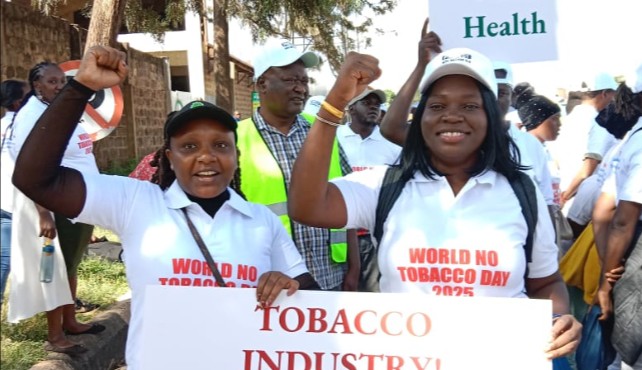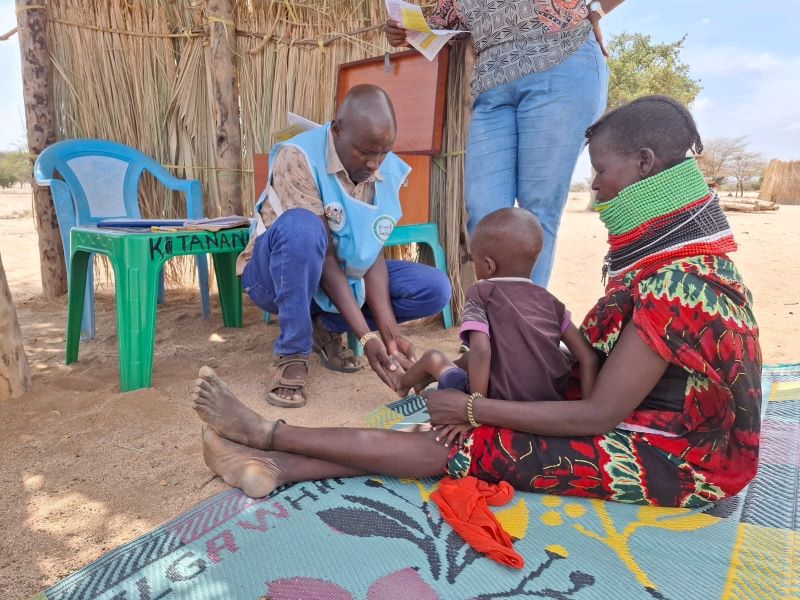Mother’s struggle mirrors Kenya’s youth nicotine crisis amid flavoured product surge

The World Health Organisation warns that tobacco use remains the leading preventable cause of death globally and a major contributor to noncommunicable diseases like heart disease, cancer, diabetes, and respiratory illnesses.
Carolyne Adhiambo understands better than most that children absorb lessons through actions, not words. Raised in an informal settlement, she encountered drugs early, introduced by peers long before she became a wife or mother.
After overcoming years of addiction and rebuilding her life, Adhiambo now faces the heartbreak of watching her teenage daughter follow a similar path.
More To Read
- KDF denies allegations of methamphetamine theft in massive 1,024kg seizure off Kenyan coast
- Recreational cannabis use during adolescence raises risk of psychotic disorders - study
- 'No smoking' in Southeast Asia: A region quits tobacco
- Senate approves Bill to tighten tobacco regulations
- WHO warns of alarming teen vaping surge as 15 million adolescents now using e-cigarettes
- Lamu-bound bus intercepted in Malindi as police seize cannabis haul
The news struck Adhiambo like a lightning bolt. Throughout her years of addiction, she had only used bhang, believing it had medicinal value, but tobacco was a boundary she never dared to cross.
She was fully aware of its dangers, especially the risk of cancer.
“Even at my lowest, I never touched cigarettes. That was a line I refused to cross,” Adhiambo says .
So, learning that her own daughter had started smoking left her deeply shaken and heartbroken.
Peer pressure
When she confronted her, her daughter admitted that she started smoking not out of curiosity or defiance, but because of peer pressure.
“She told me her friends all smoke when they hang out. They just pass it around. She didn’t want to feel left out.”
In the crowded slums where Adhiambo lives, keeping children away from harmful influences is a daily challenge. Substances like tobacco and drugs are cheap, easily concealed, and widely accessible.
“Sometimes you only find out what your child is using through siblings or neighbours. By then, the habit has already taken hold,” she says.
Despite her daughter’s confession, Adhiambo remains unsure about the depth of her addiction.
“She doesn’t even seem to like it. I don’t understand what keeps her going back. I’ve changed my life; I don’t smoke, I don’t use drugs, but now I’m fighting the same battle again, only this time through my child,” says Adhiambo.
Flavoured nicotine products
Kenya is currently grappling with a silent but growing epidemic: the rise of flavoured nicotine products that are enticing young people with dangerous ease. These products, often disguised in bright, candy-like packaging and available in over 16,000 sweet flavours, are fueling a surge in youth vaping and nicotine addiction.
Many parents are unaware of the risks until it’s too late. Weak regulation, combined with aggressive marketing tactics, has allowed these products to infiltrate schools, homes, and social spaces with little resistance.
“I was introduced to vaping by a friend who had this sleek, beautiful vape pen. It was flavoured, rechargeable, and didn’t even cost that much. Some students would even vape during class—the teacher could smell something sweet but had no idea it was actually a vape,” says Shalyne Moraa, who started vaping while still in high school.
She explains how easy it was to become addicted.
“Vaping doesn’t have the harsh smell of traditional cigarettes, so it’s easy to do it secretly, even in your room. Unlike cigarettes, no one has to know.”
The new generation of nicotine products is designed to appeal to young people. With flavours ranging from cotton candy to mango and devices that look like USB sticks or candy, these products are blurring the line between innocence and addiction.
Peer influence has emerged as the most significant driver of substance use among university students in Kenya, according to a recent national study.
The Status of Drugs and Substance Use Among University Students in Kenya, released in February 2025, reveals that students are most likely to access drugs and substances through their friends, with 66.4 per cent of respondents saying they were introduced to or sourced substances from their peers.
The study surveyed over 15,000 undergraduate students across public and private universities and found that 59.3 per cent of students accessed substances from neighbourhood canteens and bars.
Fellow students were cited by 56 per cent as sources, and, shockingly, 39.4 per cent said they had obtained substances from lecturers.
Online platforms and institutional canteens or shops were also considered common sources, each accounting for 39.4 per cent of student responses.
Newer forms of tobacco and nicotine products, often flavoured and marketed as trendy or harmless, are also becoming increasingly popular.
Nicotine pouches
Vapes are used by 31 per cent of students, while 30.7 per cent reported using nicotine pouches.
Kuber and snuff or chewed tobacco follow at 23 per cent and 22.1 per cent, respectively. These substances, often discreet and candy-like in appearance, make it easier for students to conceal their use and develop habits without immediate detection.
Usage within the 30 days preceding the study shows significant regularity: one in five students had consumed alcohol during that period, and one in eight had used at least one tobacco product.
Other substances showed worrying patterns of use as well—one in every 22 students had used shisha, one in 17 had used e-cigarettes, one in 14 had smoked cigarettes, and one in nine had consumed cannabis. More troubling is the reported use of hard drugs, with one in 24 students using inhalants, one in 63 using cocaine, and one in 59 using heroin.
The World Health Organisation warns that tobacco use remains the leading preventable cause of death globally and a major contributor to noncommunicable diseases like heart disease, cancer, diabetes, and respiratory illnesses.
Today, the tobacco industry continues to evolve, aggressively marketing new and emerging nicotine and tobacco products, such as e-cigarettes, heated tobacco, and flavoured nicotine pouches, as safer alternatives.
Cancer-related deaths
WHO notes that tobacco use is responsible for about 22 per cent of all cancer-related deaths globally. In 2019 alone, it was linked to approximately 2.6 million cancer deaths worldwide.
Lung cancer is the most affected, with nearly 70 per cent of cases caused by tobacco, followed by cancers of the larynx, mouth, throat, and oesophagus, where tobacco accounts for over 40 per cent of deaths.
In Kenya, tobacco use contributes significantly to cancer mortality. Between 2012 and 2021, around one in three cancer deaths were linked to smoking, including 70.5 per cent of larynx and 59.6 per cent of lung cancer deaths.
These products are often targeted at children and adolescents through the use of sweet flavours, eye-catching packaging, influencer promotions, and misleading health claims.
Over 650,000 children aged 10 to 17 in Kenya have used tobacco or nicotine products, according to the Ministry of Health.
Unbranded and illegally produced products pose serious health risks, often containing toxic chemicals, pesticides, and heavy metals.
Public Health PS Mary Muthoni raised concerns over the rising trend, driven by aggressive marketing and appealing packaging. Some e-cigarettes have even been found to contain diacetyl, a chemical linked to severe lung damage.
Last week, Health Cabinet Secretary Aden Duale announced the immediate suspension of all existing licences for the importation and distribution of nicotine products. He has directed that all previously licensed entities must reapply within 21 days, ensuring full compliance with the revised regulatory guidelines.
Top Stories Today















































